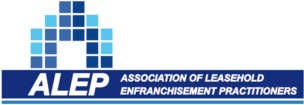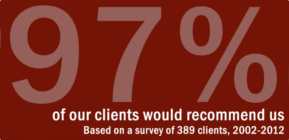Serving Your Collective Enfranchisement Notice
Enfranchisement update –24 May 2024 saw the UK Parliament pass The Leasehold and Freehold Reform Act 2024. But the actual lease enfranchisement reforms aren’t yet in effect.
Click here to read the Leasehold Reform Latest News
The Enfranchisement Notice is the first legal paperwork you will come up against when you start the collective enfranchisement process. Issuing this Notice (often referred to as a Section 13 Notice) is a legal requirement, but there is no standard format for an Collective Enfranchisement Notice – although it does need to include certain essential information ( see below). It’s therefore important to get specialist legal advice on this, and other points.
Looking for specialist advice on enfranchisement, call our team on FREEPHONE 0800 1404544 today.
What Does An Enfranchisement Notice Contain?
The law states that the following information has to be included:
· Full details of the property being enfranchised
· The name and address of the purchaser
· The price being offered to buy the freehold
· Names, addresses and signatures of all of the leaseholders and participants in the freehold purchase process.
As long as this information is provided in full, the Enfranchisement Notice should be official and legally binding. Once issued, the Enfranchisement Notice starts off a series of deadlines which have to be stuck to by everyone to make sure that the whole project stays on track.
The importance of getting your Collective Enfranchisement Notice signed properly
The Enfranchisement Notice MUST be signed personally by every participant and cannot be signed by a Power of Attorney, lawyer or any other person. A huge number of Enfranchisement Notices are declared invalid at the first hurdle because of this.
What is a nominee purchaser – and why do we need one?
The Enfranchisement Notice must contain details of the person, or company, who will actually buy the freehold and become the new freeholder – who is known as the “nominee purchaser”
The nominee purchaser can be a person – perhaps one of the leaseholders. It can also be a trust or more commonly a company formed by the leaseholders to purchase the freehold. If, as most people do, especially with larger blocks, you decide to form a company for the purpose – you must do that before the enfranchisement notice is served.
This stage is particularly important. You must get the structure of the company right and make sure that the articles of association reflect how you, as leaseholders, want to control the company – in particular voting rights and share ownership.
Make sure you include all the relevant property in your Enfranchisement notice
When putting together an Collective Enfranchisement Notice it is important to make sure that the details of two areas of property are covered, where appropriate.
The first area is the block of flats itself, and the second is what is known as “the appurtenant property” involved in the freehold purchase – any garages, parking areas, outbuildings or paths which the leaseholders also wish to buy.
If these additional areas are missed from the Enfranchisement Notice, then it will be legally assumed that the offer made is just for the block of flats and that the leaseholders have no interest in buying the appurtenant property.
The effect of the notice
In addition to starting the formal process off, the service of the initial notice fixes the valuation date as the same date that the initial notice is served. This is the date on which everything affecting the price of the freehold is set: the remaining years left on the leases, the present values of the flats and their assumed future value.
With this you have the peace of mind that, however long the negotiation takes, it will be based as if a decision was made on the date of service.
What Happens if we get the Collective Enfranchisement Notice Wrong?
Although the right to buy your freehold is in most cases a legal right, unfortunately, many freehold purchase projects never get off the ground because the Enfranchisement Notice is not legally valid, and this is why getting legal advice is so important.
If this happens to you, the law states that if you still want to buy a share of your freehold, you will have to wait a full 12 months before starting the process again by issuing another Enfranchisement Notice. Unless the mistake causing the failure of the notice has been made by your solicitor (when you will probably have the right to make a professional negligence claim against them), not only will this cause delay, but you will also have lost all the legal costs paid to date. With larger blocks, it may also mean that you lose support of some of the other leaseholders. Getting the right number of people on board in the freehold purchase in the first place can be difficult with especially with larger blocks – but much more so if the first attempt failed.
Bear in mind that the cost of enfranchisement it is also likely to increase because the leases will, you come to reapply, be at least one year shorter. And if property prices are increasing, that will also increase the size of the premium you’re going to be to pay.
That’s why it’s so important to get the right advice from one of the very small number of solicitors (like us) who are true experts in the field of collective enfranchisement and get their help to draw up the Enfranchisement Notice.
Some freeholders may exploit one of any number of loopholes to try to declare a Notice as invalid. An experienced solicitor will help you avoid these.
The Process for Declaring the Enfranchisement Notice Invalid
If the freeholder thinks that they have grounds for having the Enfranchisement Notice declared invalid, they have to make a claim at the County Court against the nominated purchaser, and ask that the court declare that the Notice is invalid. If this happens, the enfranchisement process is frozen and you can’t start the next phase of the process until the County Court has made its decision.
Counter Notices
If the freeholder of the building accepts that the Enfranchisement Notice is legally correct, they still have the option of serving a counter notice. This is the legal reply to the Enfranchisement Notice and will often have a counter offer. The freeholder will offer his own price for which he would be happy to sell the freehold.
This Counter Notice has to be issued to the leaseholders by whatever deadline is stated in the Enfranchisement Notice, usually two month. If the freeholder misses this deadlines, the leaseholders are legally allowed to buy the freehold at whatever price was stated in the initial Enfranchisement Notice. For this reason, freeholders are quick to appoint an expert solicitor; they understand the serious consequences for them if they get the Counter Notice wrong.
Tactics When Proposing a Price to the Freeholder
Some leaseholders think that offering a rock bottom price to buy the freehold in the hope that the freeholder does not reply in time is a good tactic. This is not recommended. If the County Court thinks that the price offered is unrealistic, the Enfranchisement Notice might be declared invalid.
What About the Counter Offer Price?
If on the other hand the price in the counter offer is ridiculously high, then the leaseholders have the legal right to challenge this too. The leaseholders cannot take this matter to the County Court though, and cannot have the counter offer declared invalid. In these cases the matter has to be passed to the First-Tier Tribunal – Property Chamber (previously known as the Leasehold Valuation Tribunal or LVT).
Click here to read more about how the First-Tier Property Tribunal works.
A hearing will be held to decide what the correct valuation is for the freehold. The freeholder might also apply to have the claim to be invalidated because they believe that the people named on the Enfranchisement Notice do not legally have the right to participate in the enfranchisement.
Click here to read more about the Enfranchisement Process
Collective Enfranchisement – what happens if we have a missing freeholder?
What do you do if, after all reasonable efforts, your freeholder simply cannot be found? How can you serve the notice? Well, there will be no reason to panic; the leasehold enfranchisement process can continue with this issue resolved in other ways:
• if the landlord was a company which has ceased to trade, its property may have passed to the Crown through the Treasury Solicitor. Seek them out: they should be prepared to sell the freehold to the enfranchising tenants at open market value. This must be done by negotiation and there is no need to serve the initial notice.
• if the landlord is a company in receivership, then the initial notice may be served on the receiver; similarly, if the owner is an individual in bankruptcy, the notice may be served on the trustee in bankruptcy.
• if the landlord cannot be found then the initial notice cannot be served. In this case, the tenants may make application to the County Court for what is known as “a vesting order”.
Click to read more about Vesting Orders and Missing Freeholders
Is the process the same if my freeholder has offered to sell us the freehold?
No – that would normally be handled under a separate process – the right of 1st refusal, or ROFR, although this possible for freeholders and leaseholders to sell and buy the freehold informally, without using the statutory process.
Click to read more about the Right of 1st Refusal
Getting your Collective Enfranchisement Notice Right 1st Time – Legal Advice for a Complex Matter
The collective enfranchisement process is not simple, and becomes even more complicated if your freeholder’s solicitors tries to use loopholes or technicalities to stop the enfranchisement from progressing. This is the main reason, among many others, why it is so important to get the help of a solicitor who has expertise in lease extension and collective enfranchisement work.
If you don’t get the right legal advice, leaseholders could find themselves landed with a large legal bill and a shared freehold dream that is going nowhere. It’s just not a risk worth taking.


